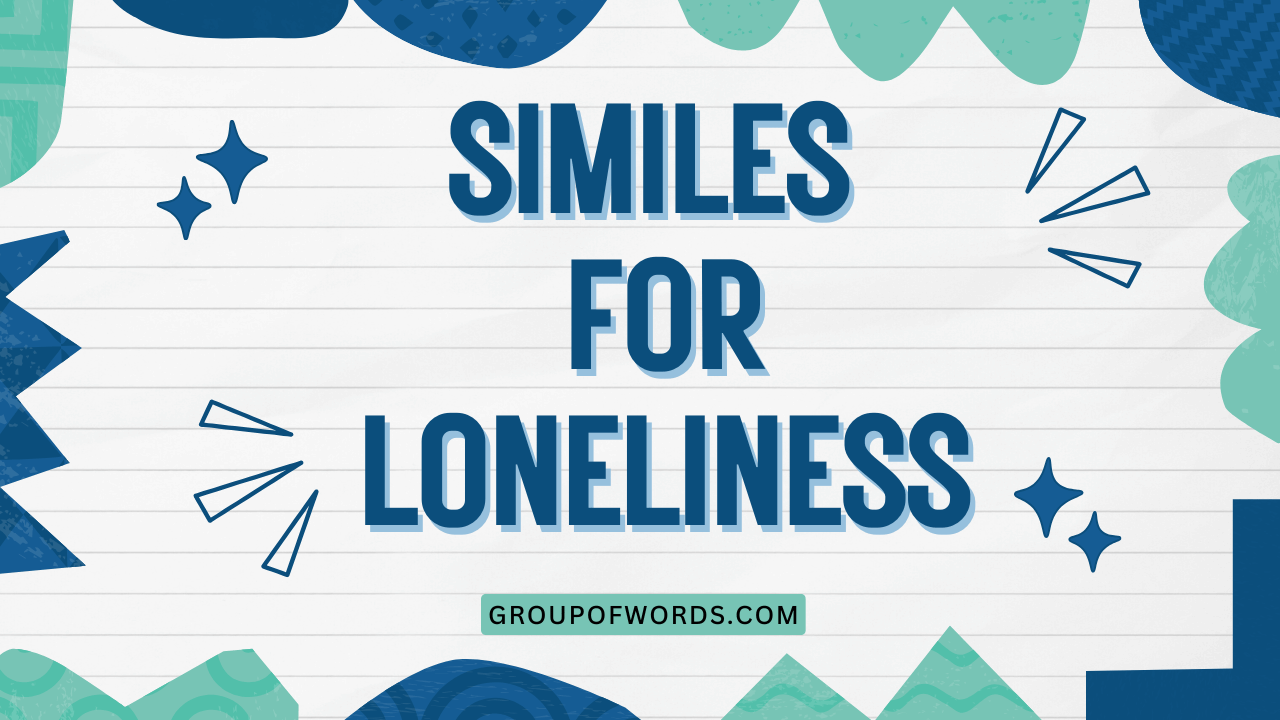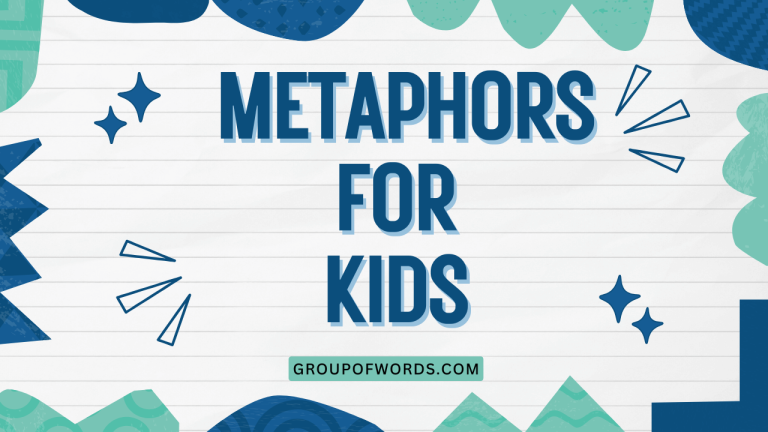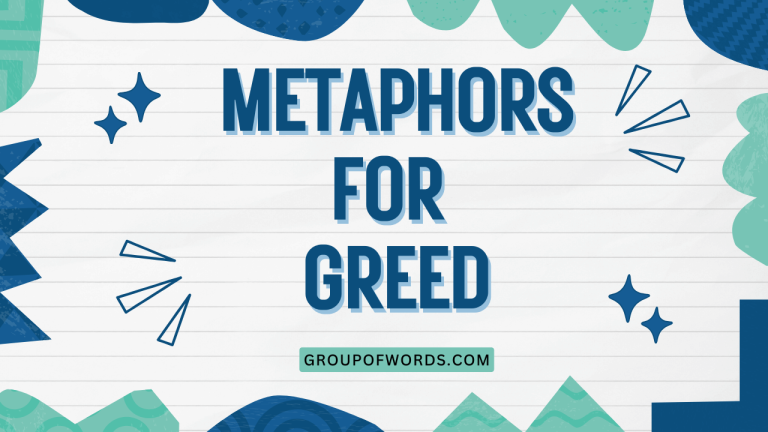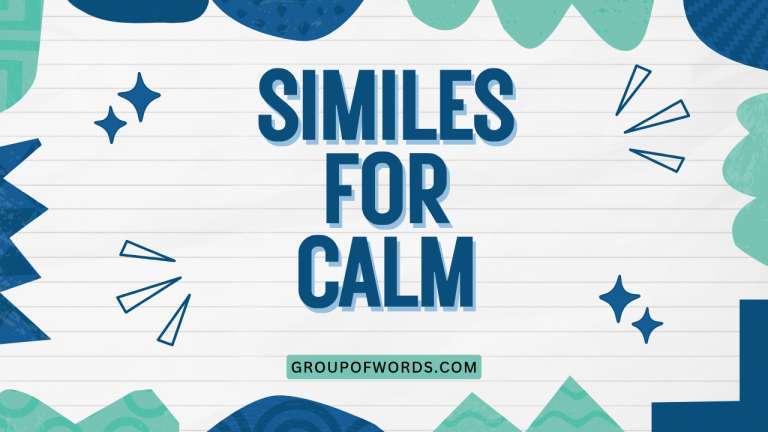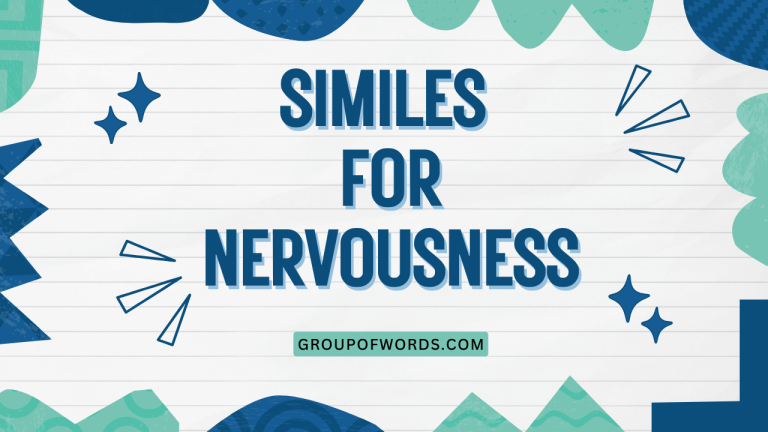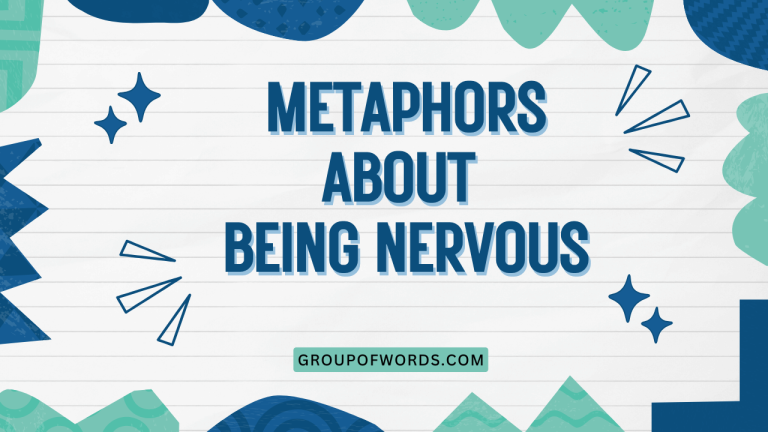Similes for Loneliness: A Comprehensive Guide
Loneliness is a universal human experience, and the ability to express it effectively is crucial for communication and emotional understanding. Similes, with their power to create vivid comparisons, offer a potent tool for conveying the nuances of solitude.
This article delves into the art of using similes to describe loneliness, exploring different types, providing numerous examples, and offering practical exercises to enhance your writing and speaking skills. Whether you’re a student, writer, or simply someone interested in improving your command of the English language, this guide will equip you with the knowledge and resources to master the use of similes for expressing loneliness.
This article is structured to provide a comprehensive understanding of similes for loneliness, starting with the basic definition and progressing to more advanced applications. By the end of this guide, you will be able to identify, understand, and effectively use similes to express the feeling of loneliness in various contexts.
From creative writing to everyday conversation, the ability to articulate loneliness with precision and nuance is a valuable asset.
Table of Contents
- Definition of Simile
- Structural Breakdown of Similes
- Types of Similes for Loneliness
- Examples of Similes for Loneliness
- Usage Rules for Similes
- Common Mistakes When Using Similes
- Practice Exercises
- Advanced Topics: Nuances in Simile Usage
- Frequently Asked Questions
- Conclusion
Definition of Simile
A simile is a figure of speech that directly compares two different things using the words “like” or “as.” The purpose of a simile is to create a vivid image or to emphasize a particular quality shared by the two things being compared. In the context of expressing loneliness, similes can be particularly effective in conveying the intensity and emotional impact of this feeling.
Similes are a type of figurative language, which means they are not meant to be taken literally. Instead, they invite the reader or listener to make a connection between two seemingly unrelated things, highlighting a shared characteristic.
For example, saying “He was as lonely as a cloud” doesn’t mean the person literally resembles a cloud; rather, it suggests a sense of isolation and detachment, similar to how a single cloud might drift alone in the sky.
The function of a simile is to enhance understanding and create a more engaging and memorable description. By using similes, writers and speakers can evoke emotions and paint a more vivid picture in the minds of their audience.
In the case of loneliness, similes can help to convey the depth and complexity of this often-difficult emotion.
Structural Breakdown of Similes
The basic structure of a simile consists of three main components:
- The Subject: This is the thing being described (e.g., the person feeling lonely).
- The Comparison Word: This is either “like” or “as.”
- The Object of Comparison: This is the thing to which the subject is being compared (e.g., a solitary tree).
The general formula for a simile is: Subject + Comparison Word + Object of Comparison.
For instance, in the simile “She felt as lonely as a lighthouse,” “she” is the subject, “as” is the comparison word, and “a lighthouse” is the object of comparison. This structure allows for a clear and direct comparison, highlighting the shared quality of isolation between the subject and the object.
It’s important to ensure that the object of comparison is something that the audience can readily understand and relate to. The more vivid and evocative the object of comparison, the more effective the simile will be in conveying the intended meaning.
Choosing the right object of comparison is crucial for creating a powerful and impactful simile.
Types of Similes for Loneliness
Similes for loneliness can be categorized based on the specific aspect of loneliness they emphasize. Here are some common types:
Similes Emphasizing Isolation
These similes focus on the feeling of being cut off from others, of being alone and separated from the world. They often use images of solitude and detachment to convey this sense of isolation.
Examples include: “as lonely as a single star in the night sky” or “like a ship lost at sea.”
Similes Emphasizing Emptiness
These similes highlight the feeling of hollowness and lack of connection that often accompanies loneliness. They may use images of barrenness or desolation to convey this sense of emptiness.
Examples include: “as empty as a deserted house” or “like a dried-up well.”
Similes Emphasizing Yearning
These similes focus on the longing for companionship and connection that is characteristic of loneliness. They may use images of searching or reaching out to convey this sense of yearning.
Examples include: “as yearning as a lost child” or “like a vine seeking a trellis.”
Similes Emphasizing Vulnerability
These similes highlight the feeling of being exposed and unprotected that can accompany loneliness. They may use images of weakness or fragility to convey this sense of vulnerability.
Examples include: “as vulnerable as a newborn bird” or “like a leaf in the wind.”
Examples of Similes for Loneliness
Here are several examples of similes for loneliness, categorized by the specific aspect of loneliness they emphasize. Each table contains a variety of similes, offering diverse ways to express this complex emotion.
Similes Emphasizing Isolation
The following table provides a list of similes that emphasize the feeling of isolation. These similes often evoke images of solitude and detachment, helping to convey the sense of being cut off from others.
| Simile | Explanation |
|---|---|
| As lonely as a single cloud in the sky | Highlights the feeling of being alone and detached from others. |
| Like a ship lost at sea | Conveys a sense of being adrift and without direction or connection. |
| As isolated as a lighthouse keeper | Emphasizes the feeling of being physically and emotionally separated from society. |
| Lonely as a scarecrow in a field | Suggests standing alone, watching life pass by without participation. |
| Like a lone wolf howling at the moon | Conveys a sense of primal isolation and unfulfilled longing. |
| As solitary as a monk in a monastery | Highlights a chosen but potentially isolating lifestyle. |
| Like an island in the middle of the ocean | Emphasizes the feeling of being surrounded by but disconnected from others. |
| As alone as the last leaf on a tree in winter | Conveys a sense of being the only one left after everyone else has moved on. |
| Like a shadow detached from its owner | Suggests a loss of connection and belonging. |
| As lonely as a forgotten toy in the attic | Highlights the feeling of being abandoned and unused. |
| Like a ghost haunting an empty house | Emphasizes the feeling of being present but unseen and unheard. |
| As isolated as a prisoner in a cell | Conveys a sense of confinement and separation from the outside world. |
| Like a statue in a deserted park | Suggests a sense of immobility and lack of interaction. |
| As lonely as a single sock in the laundry | Highlights the feeling of being incomplete and without a pair. |
| Like a star in the daylight sky | Emphasizes the feeling of being present but unnoticed. |
| As solitary as a tree on a mountaintop | Conveys a sense of grandeur and isolation. |
| Like a pebble on an empty beach | Suggests insignificance and loneliness in a vast space. |
| As alone as a comma without a sentence | Highlights the feeling of being incomplete and without context. |
| Like a raindrop falling in the desert | Emphasizes feeling lost and insignificant in a vast, indifferent world. |
| As isolated as a satellite orbiting a distant planet | Conveys the feeling of being far removed and disconnected from everything familiar. |
| Like a misplaced puzzle piece | Suggests not fitting in or belonging to a larger picture. |
| As lonely as a silent movie star | Highlights the paradox of being seen but not heard or understood. |
| Like a lone instrument in a silent orchestra | Emphasizes the feeling of unfulfilled potential and lack of harmony. |
Similes Emphasizing Emptiness
This table focuses on similes that emphasize the feeling of emptiness associated with loneliness. These similes often use imagery of barrenness and desolation to convey the sense of hollowness.
| Simile | Explanation |
|---|---|
| As empty as a deserted house | Highlights the feeling of hollowness and lack of life. |
| Like a dried-up well | Conveys a sense of being depleted and unable to offer anything. |
| As hollow as a drum | Emphasizes the lack of substance and depth. |
| Lonely as a ghost town | Suggests a place devoid of life and activity. |
| Like a barren wasteland | Conveys a sense of desolation and lack of opportunity. |
| As empty as a blank page | Highlights the lack of content and meaning. |
| Like a silent room | Emphasizes the absence of sound and connection. |
| As hollow as a broken promise | Conveys a sense of disappointment and emptiness. |
| Like a deflated balloon | Suggests a loss of joy and energy. |
| As empty as a forgotten grave | Highlights the feeling of being unremembered and insignificant. |
| Like a vacant stare | Emphasizes the lack of emotion and engagement. |
| As hollow as a tree struck by lightning | Conveys a sense of being damaged and weakened. |
| Like a desert without an oasis | Suggests a lack of comfort and relief. |
| As empty as a theater after the show | Highlights the feeling of being left alone after the excitement is over. |
| Like a heart without love | Emphasizes the fundamental lack of emotional connection. |
| As hollow as an echo | Conveys a sense of emptiness and repetition. |
| Like a shell on the beach | Suggests being empty and abandoned by its former inhabitant. |
| As empty as a politician’s promises | Highlights the lack of substance and sincerity. |
| Like a song without lyrics | Emphasizes the lack of meaning and expression. |
| As barren as a winter field | Conveys a sense of dormancy and lack of growth. |
| Like a room without furniture | Suggests a lack of comfort and personality. |
| As vacant as an abandoned mine | Highlights the feeling of being depleted and unproductive. |
| Like a book with missing pages | Emphasizes the feeling of incompleteness and lack of narrative. |
Similes Emphasizing Yearning
The following table provides examples of similes that emphasize the yearning for companionship and connection that often accompanies loneliness. These similes use imagery of searching and reaching out to convey this sense of longing.
| Simile | Explanation |
|---|---|
| As yearning as a lost child | Highlights the desperate need for comfort and security. |
| Like a vine seeking a trellis | Conveys a sense of reaching out for support and connection. |
| As longing as a sailor for home | Emphasizes the deep desire for familiarity and belonging. |
| Lonely as a heart searching for its other half | Suggests a fundamental need for completion and love. |
| Like a flower reaching for the sun | Conveys a sense of striving for warmth and fulfillment. |
| As yearning as a bird for its nest | Highlights the instinctive need for shelter and belonging. |
| Like a moth drawn to a flame | Emphasizes the irresistible pull towards connection, even if it’s dangerous. |
| As longing as a desert for rain | Conveys a sense of desperate need for nourishment and life. |
| Like a hand reaching out in the dark | Suggests a blind and desperate search for connection. |
| As yearning as a musician for an audience | Highlights the need for validation and appreciation. |
| Like a voice crying out in the wilderness | Emphasizes the feeling of being unheard and unacknowledged. |
| As longing as a prisoner for freedom | Conveys a sense of confinement and the desire for liberation. |
| Like a student searching for knowledge | Suggests a thirst for understanding and connection. |
| As yearning as an artist for recognition | Highlights the need for validation and appreciation of one’s work. |
| Like a stream searching for the ocean | Emphasizes the desire for a greater sense of belonging and purpose. |
| As longing as a seed for fertile ground | Conveys a sense of potential waiting to be realized. |
| Like a compass pointing north | Suggests an unwavering desire for direction and guidance. |
| As yearning as a reader for a good story | Highlights the need for escape and connection through narrative. |
| Like a planet drawn to a star | Emphasizes the powerful attraction and dependence on a central force. |
| As longing as an explorer for new horizons | Conveys a sense of adventure and the desire to discover the unknown. |
| Like a dancer searching for their rhythm | Suggests a quest for harmony and self-expression. |
| As yearning as a writer for inspiration | Highlights the need for creative stimulus and connection. |
| Like a fire seeking fuel | Emphasizes the need for sustenance and growth. |
Usage Rules for Similes
While similes are a powerful tool for expression, it’s important to use them correctly to ensure clarity and impact. Here are some key usage rules:
- Use “like” or “as”: These are the defining words of a simile. Make sure to include one or the other in your comparison.
- Compare dissimilar things: The things being compared should be different enough to create a meaningful comparison. Comparing two very similar things defeats the purpose of a simile.
- Ensure the comparison is clear: The quality or characteristic being compared should be evident to the reader or listener. Avoid comparisons that are too obscure or confusing.
- Avoid clichés: Overused similes can sound stale and unoriginal. Try to come up with fresh and creative comparisons.
- Consider your audience: Choose objects of comparison that your audience will understand and relate to. Cultural references or specialized knowledge may not be effective for all audiences.
Example of a correct simile: “He felt as lonely as a scarecrow in a field.”
Example of an incorrect simile: “He felt like a person.” (This is not a simile because it compares two very similar things.)
Common Mistakes When Using Similes
Even experienced writers and speakers can sometimes make mistakes when using similes. Here are some common errors to avoid:
| Mistake | Correct Example | Incorrect Example |
|---|---|---|
| Using “than” instead of “like” or “as” | He was as lonely as a ghost. | He was lonelier than a ghost. (This is a comparison, but not a simile.) |
| Comparing similar things | She felt like a lost puppy in a crowd. | She felt like a person in a crowd. |
| Using a cliché | He was as lonely as a forgotten melody. | He was as lonely as a cloud. (This is a very common, overused simile.) |
| Making the comparison unclear | He felt as lonely as a quantum particle. | He felt as lonely as a distant star. (More easily understood.) |
Practice Exercises
Test your understanding of similes for loneliness with these practice exercises.
Exercise 1: Identifying Similes
Identify the similes in the following sentences. Underline the simile and identify the subject and object of comparison.
| Question | Answer |
|---|---|
| 1. She felt as lonely as a single raindrop falling into the ocean. | Simile: as lonely as a single raindrop falling into the ocean. Subject: She. Object: a single raindrop falling into the ocean. |
| 2. His heart was like a desolate landscape, barren and empty. | Simile: like a desolate landscape, barren and empty. Subject: His heart. Object: a desolate landscape, barren and empty. |
| 3. He walked through the crowded streets feeling as isolated as a monk in a silent retreat. | Simile: as isolated as a monk in a silent retreat. Subject: He. Object: a monk in a silent retreat. |
| 4. The old house stood as lonely as a sentinel guarding forgotten memories. | Simile: as lonely as a sentinel guarding forgotten memories. Subject: The old house. Object: a sentinel guarding forgotten memories. |
| 5. Her laughter echoed in the empty room, sounding like a ghost’s whisper. | Simile: sounding like a ghost’s whisper. Subject: Her laughter. Object: a ghost’s whisper. |
| 6. He felt like a ship lost at sea, with no land in sight. | Simile: like a ship lost at sea, with no land in sight. Subject: He. Object: a ship lost at sea, with no land in sight. |
| 7. She was as alone as the last tree standing after a forest fire. | Simile: as alone as the last tree standing after a forest fire. Subject: She. Object: the last tree standing after a forest fire. |
| 8. His voice, when he spoke, was like the rustling of dry leaves in the autumn wind. | Simile: like the rustling of dry leaves in the autumn wind. Subject: His voice. Object: the rustling of dry leaves in the autumn wind. |
| 9. In the midst of the celebration, he felt as detached as an astronaut floating in space. | Simile: as detached as an astronaut floating in space. Subject: he. Object: an astronaut floating in space. |
| 10. Her hope dwindled, becoming like a flickering candle in a strong wind. | Simile: becoming like a flickering candle in a strong wind. Subject: Her hope. Object: a flickering candle in a strong wind. |
Exercise 2: Completing Similes
Complete the following similes by adding an appropriate object of comparison.
| Question | Answer |
|---|---|
| 1. He felt as lonely as ______. | He felt as lonely as a forgotten book on a shelf. |
| 2. She was like ______ in a crowded room. | She was like a silent observer in a crowded room. |
| 3. His voice sounded as hollow as ______. | His voice sounded as hollow as an empty well. |
| 4. The town felt as deserted as ______. | The town felt as deserted as a ghost town after dark. |
| 5. She was as isolated as ______. | She was as isolated as a remote research station in Antarctica. |
| 6. He felt like ______ in a foreign land. | He felt like a stranger in a foreign land. |
| 7. She was as alone as ______ at midnight. | She was as alone as a security guard at midnight. |
| 8. His heart was as empty as ______. | His heart was as empty as a museum after closing. |
| 9. She felt as disconnected as ______. | She felt as disconnected as a phone line during a storm. |
| 10. He was as lost as ______ without a map. | He was as lost as a tourist without a map. |
Exercise 3: Creating Similes
Create your own similes to describe the feeling of loneliness in the following scenarios.
- Walking alone in a park on a rainy day.
- Sitting by yourself in a crowded cafeteria.
- Being the only person awake in a quiet house.
- Moving to a new city and not knowing anyone.
- Watching your friends move on with their lives while you stay behind.
Possible Answers (these are examples, many other similes are suitable):
- Walking alone in a park on a rainy day: I felt as lonely as a solitary tree being drenched by the rain.
- Sitting by yourself in a crowded cafeteria: I felt like a ghost at a feast, present but unseen.
- Being the only person awake in a quiet house: I felt as alone as a night watchman guarding a silent world.
- Moving to a new city and not knowing anyone: I felt like a raindrop lost in a vast ocean.
- Watching your friends move on with their lives while you stay behind: I felt as isolated as a single tree left standing after a forest has moved on.
Advanced Topics: Nuances in Simile Usage
For advanced learners, it’s important to understand the more subtle aspects of simile usage. This includes recognizing the impact of word choice, considering the context, and avoiding mixed metaphors.
Word Choice: The specific words you choose can significantly affect the impact of your simile. For example, “He was as lonely as a prisoner” has a different connotation than “He was as lonely as a monk.” The first suggests forced isolation, while the second suggests chosen solitude.
Context: The context in which you use a simile can also influence its meaning. A simile that works well in one situation may not be appropriate in another. Consider the tone and purpose of your writing or speaking when choosing a simile.
Mixed Metaphors: Avoid combining unrelated images in a single simile. This can create confusion and weaken the impact of your comparison. For example, “He was as lonely as a fish out of water, trying to climb a tree” is a mixed metaphor because it combines two unrelated images.
Frequently Asked Questions
Here are some frequently asked questions about using similes for loneliness:
- What’s the difference between a simile and a metaphor?
A simile directly compares two things using “like” or “as,” while a metaphor implies a comparison without using these words. For example, “He is like a lion” is a simile, while “He is a lion” is a metaphor.
- Can a simile be too obvious?
Yes, overused or cliché similes can sound stale and unoriginal. It’s best to strive for fresh and creative comparisons.
- How can I make my similes more effective?
Choose vivid and evocative objects of comparison that your audience can readily understand and relate to. Consider the specific aspect of loneliness you want to emphasize and choose your words carefully.
- Is it okay to use similes in formal writing?
Yes, similes can be used in formal writing, but it’s important to use them judiciously and ensure that they are appropriate for the tone and purpose of your writing.
- How do I avoid using clichés when creating similes?
Brainstorm a list of potential objects of comparison and try to think outside the box. Look for unique and unexpected connections between the subject and the object.
- What if I can’t think of a good simile?
Sometimes it helps to take a break and come back to it later. You can also try brainstorming with a friend or colleague. Consider what specific aspect of loneliness you want to convey and focus your search on that particular element.
- Are similes subjective?
Yes, to some extent. While there are objective rules about grammar and structure, the effectiveness of a simile can depend on the individual’s interpretation and understanding.
- Can a simile be extended?
Yes, a simile can be extended by adding more details and elaborating on the comparison. This can create a more vivid and impactful image.
Conclusion
Mastering the art of using similes to express loneliness can significantly enhance your ability to communicate this complex emotion with clarity and nuance. By understanding the structure, types, and usage rules of similes, you can create vivid and impactful comparisons that resonate with your audience.
Remember to avoid common mistakes and strive for fresh and creative expressions.
The ability to articulate loneliness effectively is a valuable skill in both writing and speaking. Whether you’re crafting a poem, writing a novel, or simply trying to express your feelings to a friend, similes can provide a powerful tool for conveying the depth and complexity of this often-difficult emotion.
Practice the exercises provided in this guide and continue to explore the possibilities of simile usage to refine your skills and expand your expressive range.
